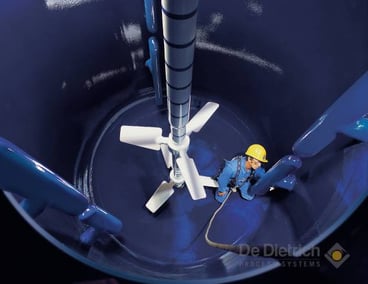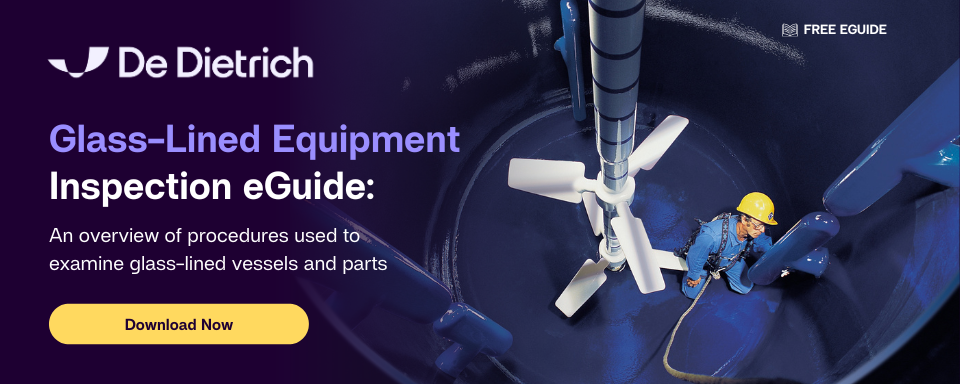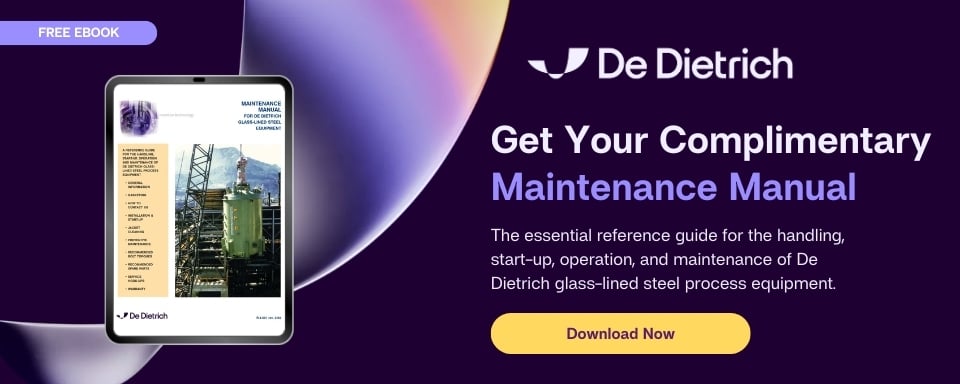Basic “DIY” Preventative Maintenance for Glass-Lined Equipment – Part 1
 Glass-lined equipment in the chemical and pharmaceutical industries is the workhorse in the process. You would expect such a critical piece of equipment would receive the top level of care, but this is often not the case. In the past, preventative maintenance, or "PM", was virtually nonexistent; in fact, it was common practice for the equipment to run until failure (The horror! The horror!). Over the last ten years there have been an increase in Reliability Engineers coming onboard to take a more proactive approach to glass-lined equipment and help it run with less downtime (i.e. taking the time to service the ongoing maintenance needs of the equipment in an efficient way). Most companies can find themselves somewhere in the middle of that spectrum. While you may not have the budget to hire a reliability engineer who can focus specifically on managing the lifecycle of your equipment, most plant managers have enough sense to follow equipment guidelines and put best practices into place when operating and maintaining an expensive piece of equipment.
Glass-lined equipment in the chemical and pharmaceutical industries is the workhorse in the process. You would expect such a critical piece of equipment would receive the top level of care, but this is often not the case. In the past, preventative maintenance, or "PM", was virtually nonexistent; in fact, it was common practice for the equipment to run until failure (The horror! The horror!). Over the last ten years there have been an increase in Reliability Engineers coming onboard to take a more proactive approach to glass-lined equipment and help it run with less downtime (i.e. taking the time to service the ongoing maintenance needs of the equipment in an efficient way). Most companies can find themselves somewhere in the middle of that spectrum. While you may not have the budget to hire a reliability engineer who can focus specifically on managing the lifecycle of your equipment, most plant managers have enough sense to follow equipment guidelines and put best practices into place when operating and maintaining an expensive piece of equipment.
Regardless of how you’ve treated your equipment in the past, or how you care for it today, it is critical for the wellbeing of your equipment for us to note: The glass lining is one of the most important items to have a regular preventative maintenance schedule. We recommend at the minimum annual inspections. For more specific guidelines read our Step-by-Step Guide to Glass-Lined Equipment Inspection post or consult our Glass-Lined Equipment Inspection eGuide.
Now that preventative maintenance is in the forefront in many plants, we can help with some recommendations on what and where to look to try and alleviate future problems and decrease downtime. These are all PM inspections that you or your personnel can perform in-house. In this first of a two-part blog post, we’ll breakdown of some of the more important areas to concentrate on inside the vessel.
The following inspections should include a thorough visual inspection with a very strong light – we recommend an LED with at least 80 lumens.
Spark Testing
Spark testing the glass lining is the best way to determine if you have any damage to the lining. We recommend no more than 6K volts when spark testing. There are a lot of different types of spark testers on the market, some with variable voltage that can go as high as 20K volts. If you have a variable voltage spark tester make sure it’s set to no more than 6K volts. Higher voltage can cause damage to the glass lining.
Glass Thickness Testing
Random thickness testing should be done anytime you see a change in the surface of the glass lining. The fire polish (this is the high gloss finish you would see with a new reactor) is the indicator that something is going on with the glass. If you see a dull finish instead of the nice shiny surface, then something has happened to the glass. It doesn’t mean the lining is bad, but it serves as a reminder that you should check the thickness to make sure it is still within the proper range of 40-90 mils to provide the corrosive resistance.
Interior Repairs
Inspect all the repairs (plugs, patches, etc.), if any, to make sure they are still in good condition.
While we hope that you find all of these instructions and tips helpful, the most important piece of information to take away from this post is the importance of preventative maintenance of glass-lined equipment. If you don’t have a PM program or schedule set up to address these general safety and housekeeping items, you need to start one!
All of the above-mentioned inspection procedures are basic and can be handled without the need to consult the equipment manufacturer. However, if you are short staffed, don’t have enough glass lining expertise on your team, don’t want to deal with any preventative maintenance yourself, or simply feel more comfortable having a trained expert on-hand, De Dietrich Process Systems can help. We offer preventative maintenance service for all glass-lined equipment and can send one of our trained service technicians to visit your site, perform maintenance checks and make recommendations to help you extend the life of your equipment. Contact us online or give us a call at 983-317-2585 and we can schedule a visit.
And be sure to read part 2 of this post where we continue this discussion and talk about exterior inspection procedures.

